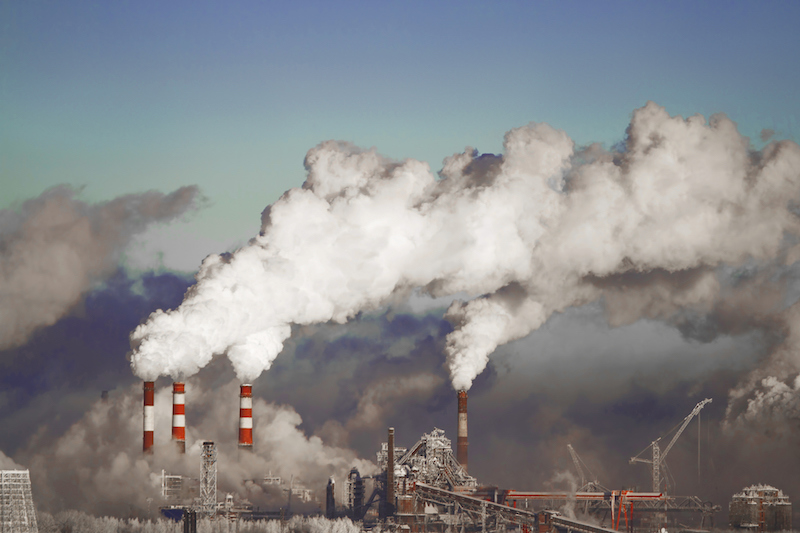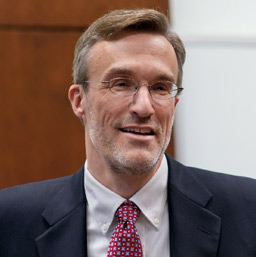
Federal action is key to effectively addressing climate change.
“Something is better than nothing.” “Don’t let the perfect be the enemy of the good.”
Who could take issue with aphorisms like these? They seem especially difficult to dispute today in the context of U.S. climate policy. Congress failed to adopt comprehensive national climate legislation during the Obama Administration. The Trump Administration has announced plans to pull out of the Paris Agreement and to repeal the U.S. Environmental Protection Agency’s (EPA) Clean Power Plan. In such a context, actions by state and local governments, along with voluntary efforts by industry, are all presumably better than nothing.
We are thus grateful to Craig Segall and David Hults for responding to an earlier essay of ours by extolling the virtues of various state and local climate initiatives. Yet as much as we personally share Segall and Hults’s hopefulness that “real progress” on climate policy can be made over the next several years, as scholars we have a duty to do more than just traffic in hope. Optimism can blind decisionmakers and the public to real policy challenges at the state and local level. More troubling still is the possibility of lulling the public into thinking the United States can adequately address climate change without federal action.
Segall and Hults respond to an essay we wrote that first appeared earlier this summer, not long after President Donald J. Trump had announced his intention to withdraw from the Paris Agreement. President Trump’s announcement prompted an immediate outpouring of responses from state and local leaders, many of whom pledged to work to meet the U.S. emissions reduction commitments under the Paris accord. Former New York City Mayor Michael Bloomberg perhaps best exemplified these leaders’ optimism when he declared, “We’re going to do everything America would have done if it had stayed committed.”
Yet achieving comparable reductions without national governmental action takes much more than optimism. Granted, a good number of scholars who we respect and admire—Cinnamon Carlarne, Dan Esty, Eric Orts, Barry Rabe, Chuck Sabel, among others—have been suggesting for years that successful environmental policy starts from the ground up, particularly from voluntary, collaborative action by non-federal actors. And in recent years, a variety of initiatives such as the U.S. Climate Alliance, Regional Greenhouse Gas Initiative, and the Pacific Coast Collaborative—have percolated “up” in the fashion that these scholars, as well as Segall and Hults, have described.
In the absence of any meaningful federal action, such bottom-up strategies would appear irrefutably to be better than nothing. It is certainly undeniable that any effective policy to reduce carbon emissions depends on behavioral change at the ground level. After all, as long as the U.S. energy system depends heavily on carbon-based fuels, then each person contributes in some way to greenhouse gas emissions.
Yet recognizing the need to change behavior at the local level neither logically nor empirically compels the conclusion that policy action on climate is best taken at the local level. On the contrary, as one of us has previously argued in print, a global problem like climate change will be best addressed through action at the broadest and highest governance level possible, such as through a national carbon tax or an upstream cap-and-trade system. Administering myriad local policies will prove costly and cumbersome. Diffuse responses require careful coordination to minimize leakage and regulatory arbitrage. And if they do not cover the entire country or planet, subnational efforts will inherently be restricted in their impact due to their limited geographic scope.
That is the reality in terms of where the United States stands today. A recent report released by the new initiative spearheaded by Michael Bloomberg and California Governor Jerry Brown trumpets the fact that “states, cities, and businesses constituting more than half of the U.S. economy have mobilized behind the U.S. pledge under the Paris Agreement.” But scratch beneath the surface and, as Amy Harder has noted, the pledges from states to date only cover “up to 35 percent of America’s total greenhouse gas emissions, according to the report’s appendix data,” which “means this group represents roughly less than 5 percent of the world’s emissions, despite comprising an economy that’s the world’s third-largest.”
As much as we laud those states, cities, and businesses that are taking voluntary action, they clearly do not address the vast majority of emissions in the United States. Any honest consideration of the potential for subnational action on climate policy also cannot ignore the fact that more than twenty-five states joined the litigation challenging EPA’s Clean Power Plan—as did the U.S. Chamber of Commerce, the National Association of Manufacturers, the American Chemistry Council, and a dozen other major business groups. Although voluntary compliance with public and private standards—such as through “green clubs” like America’s Pledge—may lead to some improved environmental outcomes, these efforts at best complement, but do not substitute for, mandatory national regulation in countries like the United States.
In addition to the inherent structural challenges of tackling a global problem through local action, the legal risks accompanying subnational action should not be overlooked. Once the federal government retreats from the Paris Agreement and abandons the Clean Power Plan, this does not necessarily give states a green light to take any action they please. As we outlined in our initial essay, states and localities can only go forward within the constraints of law. The Tenth Amendment’s affirmation of state autonomy does not immunize states from the kinds of potential legal challenges we outlined.
We see no reason to assume that such legal risks will not manifest themselves in the years ahead. Segall and Hults, for example, mention the authority California and other states have been afforded under the Clean Air Act to develop their own automobile emissions standards. Yet, as we mentioned in our original essay, California’s authority exists only insofar as the federal EPA has granted it a waiver that allows it to develop its own auto emissions standards and that permits other states to adopt California’s standards. It would not seem unreasonable still to imagine Administrator Scott Pruitt taking an interest in revisiting California’s waiver at some point.
States and localities need to move forward with their eyes wide open to the legal risks they face. That such risks exist will not, of course, mean that no action should be taken. But legal risks need to be confronted and managed—or at the very least understood and then accepted, when justified, as the price of acting.
Most imprudent of all would be to extoll the virtues of regional, state, local, and corporate climate action so that it might look like the United States—and the global community—will fare just fine even in absence of federal policy intervention. An enthusiastic embrace of subnational climate action unintentionally grants some cover to the federal government and may only serve to legitimate its current “do nothing” approach. For this reason, we obviously agree fully with Segall and Hults that “federal leadership, funds, and innovation are desperately needed.” To their credit, even the authors of the latest report from the Bloomberg-Brown initiative acknowledge that “non-federal policies cannot entirely replace federal climate action.”
Although it is hard to see the federal government taking action for at least the next few years, maintaining pressure for a federal climate policy will be necessary for when the policy window does open. Paying attention now to the structural limitations and legal risks of state and local climate action helps combat complacency and reinforces the need for meaningful national action. Just as it is a truism that “something is better than nothing,” President Theodore Roosevelt had it right too when he said, “Keep your eyes on the stars, but remember to keep your feet on the ground.”
This essay is part of a five-part series, entitled State and Local Regulation of Climate Change.





